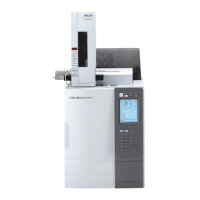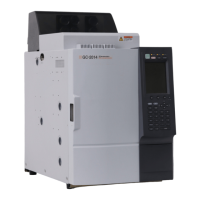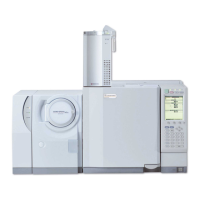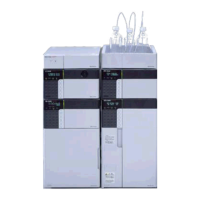VI
When Handling Insulation
When Handling Insulation
The insulatin used in the GC-2010 Plus gas chromatograph contains refractory ceramic fibers (RCF).
These fire-resistant fibers consist primarily of inorganic alumina (Al
2O3) and silica (SiO2). RCF is used
as an insulating material due to its stability at temperatures of 1000 °C or higher, and is found around
the column thermostatic chamber, the temperature-controlled portion of the INJ/DET unit, and on any
GC accessories requiring heating or the maintenance of a constant temperature.
When working with the GC unit, if there is a possibility of contact with insulation containing RCF, avoid
direct contact and observe the following precautions.
• Be sure to wear protective clothing, such as long sleeves, gloves, safety goggles, and a dust mask.
• Be sure to use a nearby ventilation system and/or dust filtration system.
• DO NOT smoke in the work area.
• After insulation-related work is finished, be sure to ventilate the work area.
• After insulation-related work is finished, be sure to gargle and wash your hands to remove any
ceramic fibers.
• If any portion of insulation material must be cut off and stored, be sure to use an appropriate sealed
container, such as a plastic bag at least 0.15 mm thick.
Shimazu has measured the airborne mineral fiber levels of the GC-2010 Plus when used under normal
operating conditions and confirmed that they are well below the concentrations allowed by Japanese
dust level regulations.
Caution
Installation or removal of the GC-2010 Plus main unit or optional units (parts) gen-
erates insulation material particles and dust. Since these materials include
ceramic fibers, be sure to observe the following precautions.
1. Inhaling ceramic fibers, either in large amounts or for extended periods, can
damage the respiratory system.
2. Direct contact with ceramic fibers can cause temporary inflammation of the skin.
Caution
Increasing the oven temperature immediately after installation may generate an
odor. The odor is generated from the glue (material: corn starch etc.) contained in
the insulation material. Although the odor dissipates after several hours, thor-
oughly ventilate the work area.

